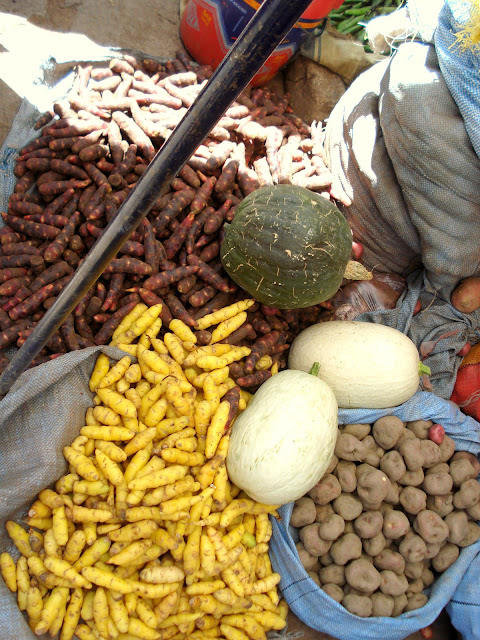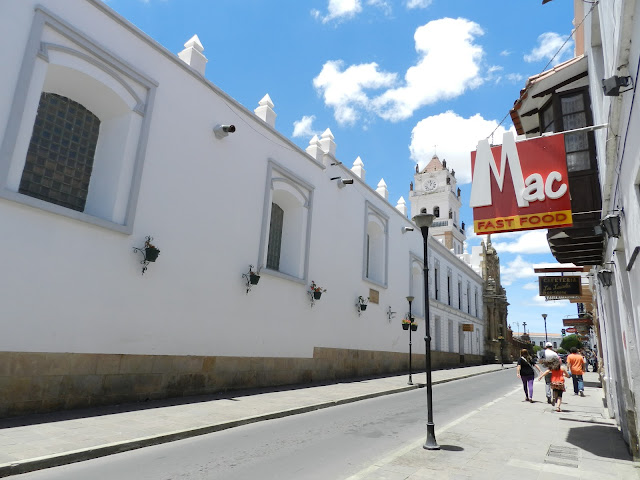
To visit the Castillo de la Glorieta, it is needed to take a 20 min ride from downtown. The Glorieta castle is somehow out of the city, it is located just besides the Military regiment. After you get off the bus, you have to walk around five minutes to get to the Castle. Most people who get off on this final stop are most likely heading there; therefore, there is no way to miss it. The entrance fee is around 15 Bolivianos, with an optional $ 10 extra if you plan to take pictures.
The appearance of the building has a wide range of styles, mainly European; some towers look like a Middle Eastern Palace. The ticket includes a guided tour around all the rooms of the building; approximately it takes around 30-minute to look around all the building while listening to the history of the site and the stories of the Argandoña family who used to live there.
The building was originally owned by Francisco Argandoña y Clotilde Urioste, both from very elite families from Potosi and Sucre. Their marriage made their joined wealth much bigger. They became a very opulent family during early XX century due to the flourished mining industry of the time; as well as a consequence of the industry expansion internationally, particularly during the World Wars.
One of the four Sucre´s names is La Plata (The Silver), as it is located close to the mine at the Cerro Rico, one of the biggest and richest mines in South America.

The wealth of this family is part a result of their mining business; in addition to their diversification in many other industries, such as the banking industry and the Bolivian diplomacy. Both families were highly educated, Francisco Argandoña could speak more than four languages, facilitating business abroad, as well as representing Bolivia internationally.
They hired some of the best designers and architects of the time to build and decorate their castle. The tour guide told us that it was full of persian carpets, elegant and expensive furniture. What still remains are the marble chimneys in some parts of the house, and the ceiling design with some representation of the devil as bats and dragons. There is a theory that people who worked in the mine must worship the Devil (called Tio in Spanish, uncle in English) somehow in order to keep the "Devil" calm and preventing him from doing something terrible.
As a result of their multiple trips to Europe, their choices were influenced by top European styles from the time. Currently, some of their nieces and nephews still have their houses in Paris.
Their wealth shows how highly profitable mining business was at the time, their good management, the affluence of the mines and Bolivian natural resources; the timing and international demands on minerals, all combined made them one of the wealthiest families in America.

Unfortunately for the family, they could not have children, reason that caused the desire of Doña Clotilde to build an orphanage located at the back of their palace. The adopted kids were taught a trade to be able to get a job in the future. As the story is told by the tour guide, these kids were considered as their own, only without inheritance rights and other privileges. It is recalled by the people who knew them that it was compulsory to spend all their Sundays with their adopted kids. Their build some doll houses and games on the backyard for the kids to play, these constructions still remain.
As a result of this social work, and their work in assistance to elders, the Pope Leo XIII gave them the title of Princes of the Glorieta, ceremony that was held in Rome.
Although the Pope gave them this Royalty titles, some historians have the theory that some money was paid to the Vatican to grant this recognition. In the room that supposed to have been their library, still remains some of the family portraits, two of them with the painting of the ceremony when the Pope granted them that order.

It was also said, that they had a very valuable book collection, as the Francisco Argandoña was fluent in many languages. Unfortunately, during the Revolution of 1952, the rebels and indigenous groups came inside the house, and stole or destroyed most of the furniture and books. The only original remaining pieces are the paintings on the walls, which represent their royal life in Europe, the Pope recognition for their charity work, as well as an interesting picture with their kinds, as surprisingly, all of them were painted with white skin and Spanish features.
The castle was abandoned for some years after the Revolution; however, the government has restored part of the furniture and replicated the one missed. Now, it is one of the main Sucre's attractions for tourism.


 Visiting a Peña while being in Bolivia is a must, especially if you have a stop in La Paz. It is a place where you can feel the enthusiasm and pride of Bolivians for their music and dances.
Visiting a Peña while being in Bolivia is a must, especially if you have a stop in La Paz. It is a place where you can feel the enthusiasm and pride of Bolivians for their music and dances. 





























